7 Strategies to Enhance Payroll Data Analytics for Insights

7 Strategies to Enhance Payroll Data Analytics for Insights
Overview
This article explores strategies designed to enhance payroll data analytics, ultimately providing better insights that inform decision-making and improve workforce management. By utilizing diverse datasets, organizations can leverage advanced analytical tools to conduct regular payroll analysis. This approach not only derives actionable insights but also leads to improved employee retention and strategic planning. Such strategies support organizations in effectively navigating the complexities of their workforce.
What if your organization could harness the power of data to make more informed decisions? By integrating various datasets, organizations can uncover trends and patterns that might otherwise go unnoticed. The advantages of employing advanced analytical tools are significant; they enable deeper insights into payroll data, which can directly influence workforce management strategies. Consequently, organizations that commit to regular payroll analysis are better positioned to enhance employee satisfaction and retention, ultimately driving success.
In conclusion, the effective use of payroll data analytics is not merely a technical exercise; it is a strategic imperative. By focusing on actionable insights derived from comprehensive data analysis, organizations can make informed decisions that foster a more engaged and productive workforce. The implications are clear: those who prioritize these strategies will find themselves better equipped to address the challenges of modern workforce management.
Introduction
Amidst the growing complexity of workforce management, harnessing payroll data analytics has emerged as a game-changer for organizations aiming to gain a competitive edge. By leveraging diverse datasets and advanced analytical tools, companies can unlock invaluable insights that inform strategic decision-making and enhance operational efficiency. However, a significant challenge remains: how can organizations effectively navigate the intricacies of payroll analytics to drive meaningful outcomes and foster a more engaged workforce? This article explores seven key strategies that can transform payroll data into actionable insights, ultimately paving the way for smarter business practices and improved employee satisfaction.
Initial Data Offering: Access Diverse Payroll Datasets for Enhanced Analytics
The Initial Data Offering (IDO) serves as a centralized hub for accessing a diverse array of compensation datasets, including employee demographics, remuneration structures, and salary trends. These datasets provide analysts with a comprehensive understanding of workforce dynamics, which is crucial for tailoring effective business strategies. The platform's robust marketplace enables organizations to discover unique datasets specifically designed for payroll data analytics, ensuring they remain competitive in their industries.
As Geoffrey Moore aptly noted, 'Without extensive information, you are blind and deaf and in the middle of a freeway.' This statement emphasizes the necessity of insight-driven understanding in today's fast-paced environment. IDO not only promotes high-quality information but also fosters a collaborative atmosphere.
How can organizations leverage these insights for informed decision-making and improved workforce management? By utilizing the IDO, businesses can empower themselves with the data needed to navigate the complexities of workforce management effectively.
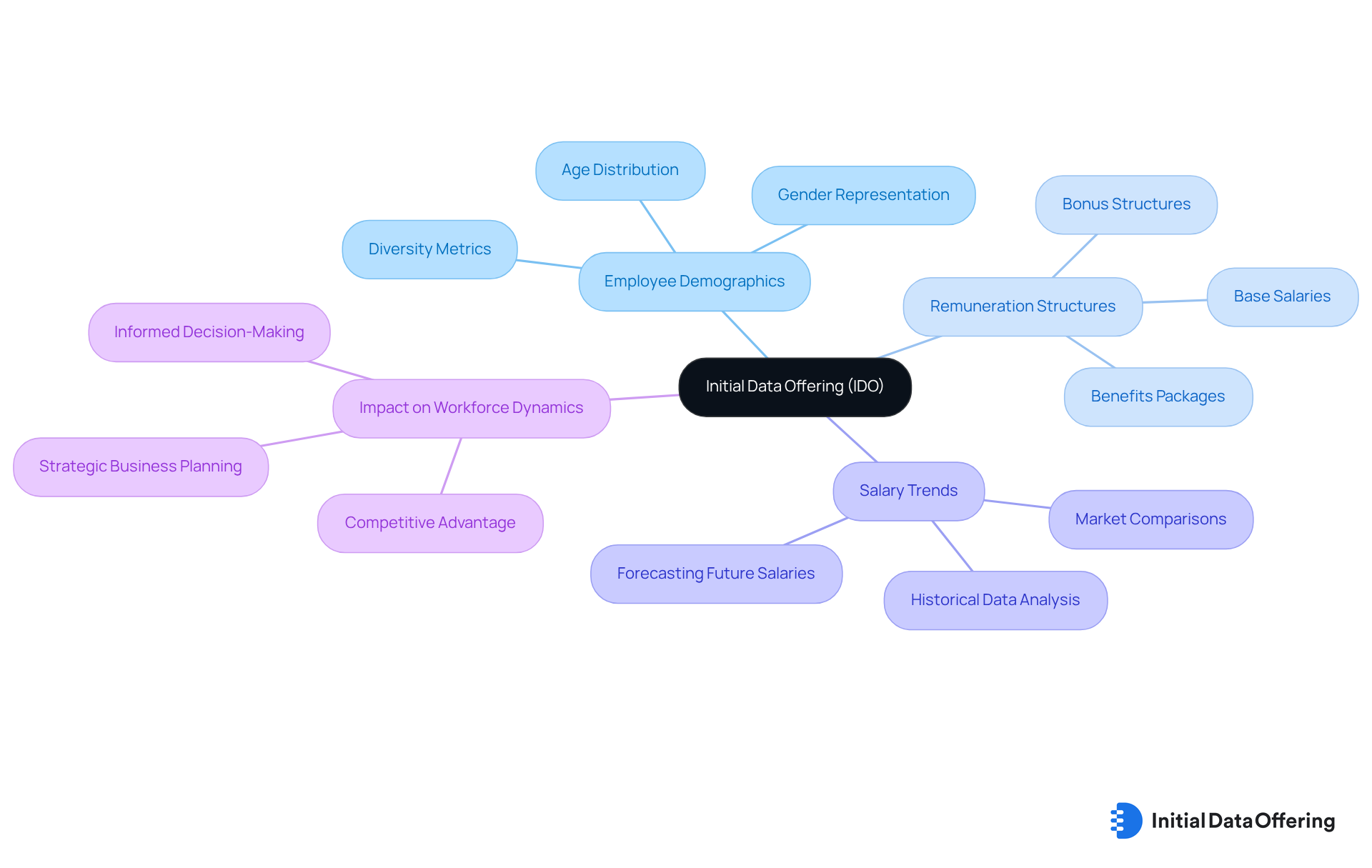
Patriot Software: Streamline Payroll Analytics with Comprehensive Tools
Patriot Software provides a robust suite of tools designed to enhance payment analysis through automation. These tools facilitate effective data gathering and assessment, seamlessly integrating payroll data with broader business metrics. This integration offers companies a comprehensive view of their financial health. The user-friendly interface simplifies navigation through complex datasets, empowering analysts to extract valuable insights that inform strategic decision-making. By leveraging these advanced tools, organizations can significantly improve the accuracy and speed of their payroll data analytics, which in turn boosts operational efficiency.
For instance, companies that have adopted automated compensation systems often report a marked reduction in errors and administrative costs. This efficiency allows them to focus on more strategic initiatives. Additionally, these systems are equipped with sophisticated security features, such as multi-factor authentication and role-based access controls, which are essential for safeguarding sensitive payroll data. Compliance with labor laws and tax regulations represents another critical advantage, as it reduces the risk of incurring penalties.
Moreover, self-service options empower employees to access their compensation details independently, thereby decreasing administrative inquiries and enhancing overall efficiency. As salary automation continues to evolve in 2025, its impact on processing efficiency and data analysis will become increasingly vital for organizations aiming to refine their financial operations. How might your organization benefit from such advancements in compensation analytics?
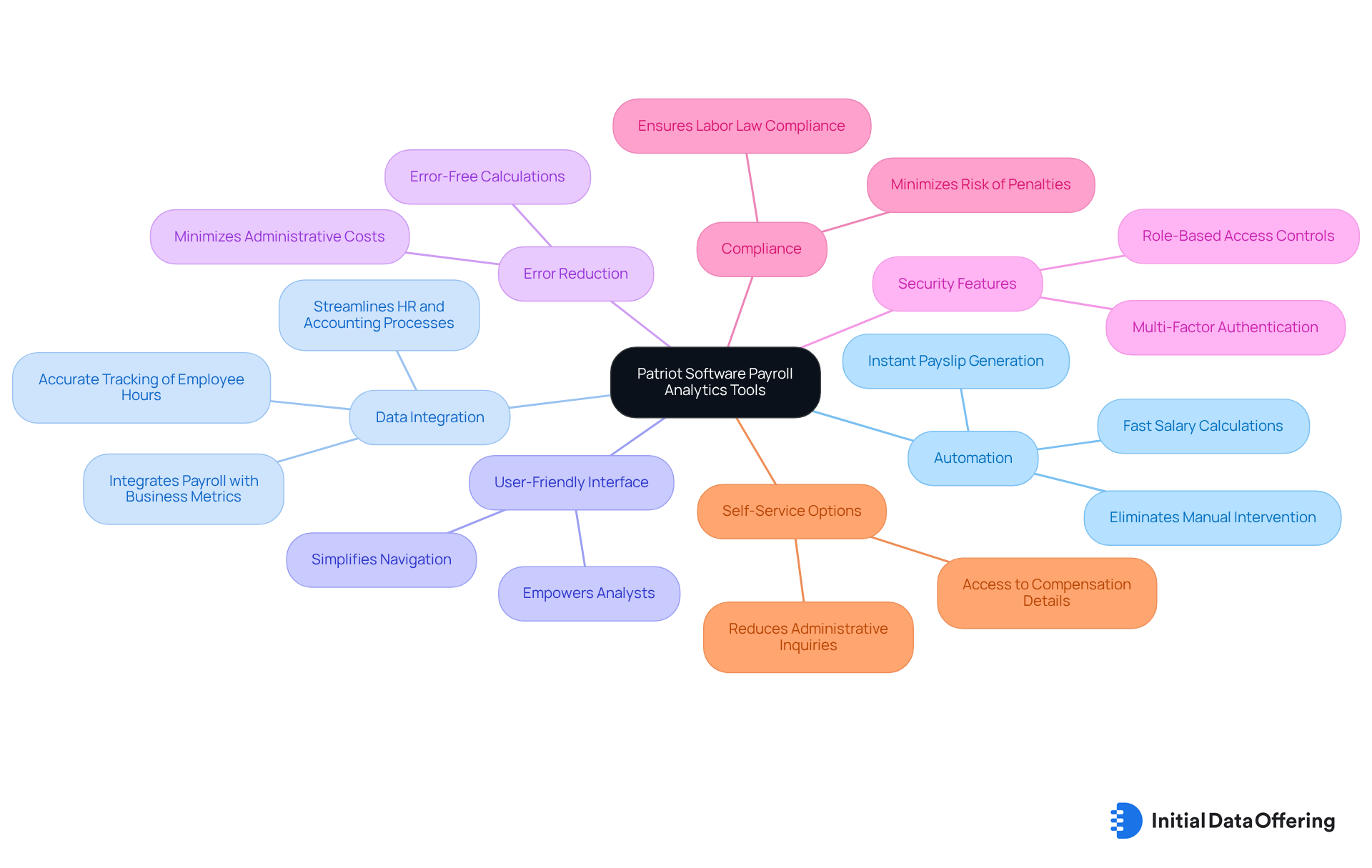
Data Accuracy: Ensure Reliable Insights in Payroll Analytics
Guaranteeing the precision of payroll data is vital for efficient compensation analysis. Incorrect financial information can lead to misguided insights and detrimental decision-making. Organizations must adopt robust verification processes to ensure the integrity of their payroll data. This involves conducting regular audits and cross-referencing payroll data with other trustworthy sources to ensure accuracy.
For instance, firms that have integrated automated compensation systems report a notable decrease in errors, thereby enhancing overall data reliability. Research indicates that organizations neglecting to invest in validation may experience higher employee turnover rates and productivity losses due to repeated compensation errors. By prioritizing information quality, companies can foster trust in the insights derived from payroll data analysis, ultimately leading to more informed strategic decisions and improved operational efficiency.
Optimal strategies, such as clear communication regarding compensation procedures and proactive error identification, can further enhance information integrity. As Jonathan Mifsud observes, "I'm always astonished by how little companies allocate to validation of information. Especially when they have time and attendance in place." This underscores the critical need for organizations to address potential risks associated with insufficient information validation, ensuring that compensation systems serve as a foundation for employee loyalty and retention.

Advanced Analytics Tools: Simplify Complex Payroll Data Interpretation
Sophisticated analytical tools, such as predictive modeling and machine learning algorithms, play a crucial role in clarifying the interpretation of intricate payroll data. These technologies enable analysts to reveal trends, predict future salary expenses, and assess the impact of various factors on compensation costs. For instance, how can machine learning examine historical compensation data to forecast variations based on seasonal patterns or organizational shifts? This capability allows for more precise budgeting and resource distribution.
The latest forecasting modeling methods in compensation analytics empower entities to proactively modify their strategies. By utilizing these models, companies can identify potential cost-saving opportunities and enhance their compensation processes. This capability not only improves decision-making but also promotes overall business agility, ensuring that organizations can swiftly adapt to changing market conditions and workforce dynamics.
Practical applications of machine learning in payroll data interpretation include:
- Automating anomaly detection, which aids in identifying discrepancies in payment processing
- Enhancing compliance by analyzing patterns that may indicate potential regulatory issues
The advantages of predictive modeling extend beyond simple cost forecasting; they also support strategic planning by offering actionable insights that promote informed decisions throughout the organization.

Regular Payroll Analysis: Stay Ahead of Market Trends
Regular salary analysis is essential for organizations aiming to stay ahead of market trends. By consistently reviewing payroll data, businesses can identify shifts in employee compensation, benefits utilization, and workforce demographics. This proactive approach enables companies to adjust their strategies in response to evolving market conditions, ensuring competitiveness. Furthermore, ongoing wage assessments can uncover inefficiencies and highlight areas for improvement, ultimately leading to cost savings and increased employee satisfaction.
For instance, SAIL, India's largest steel producer, faced significant financial losses due to excess manpower costs, which accounted for over 16% of its revenues. This underscores the importance of analyzing payroll data in recognizing and addressing workforce inefficiencies. Organizations that conduct regular compensation evaluations often report improved morale and retention rates, as employees feel valued and equitably compensated.
Looking ahead to 2025, market trends indicate a growing emphasis on fair compensation frameworks and benefits. Insights from HR analysts stress that regular financial assessments are crucial for informed decision-making and maintaining a competitive advantage. How can your organization leverage salary analysis to enhance employee satisfaction and optimize costs? By prioritizing this practice, businesses can better navigate the complexities of workforce management and foster a more engaged and productive workforce.
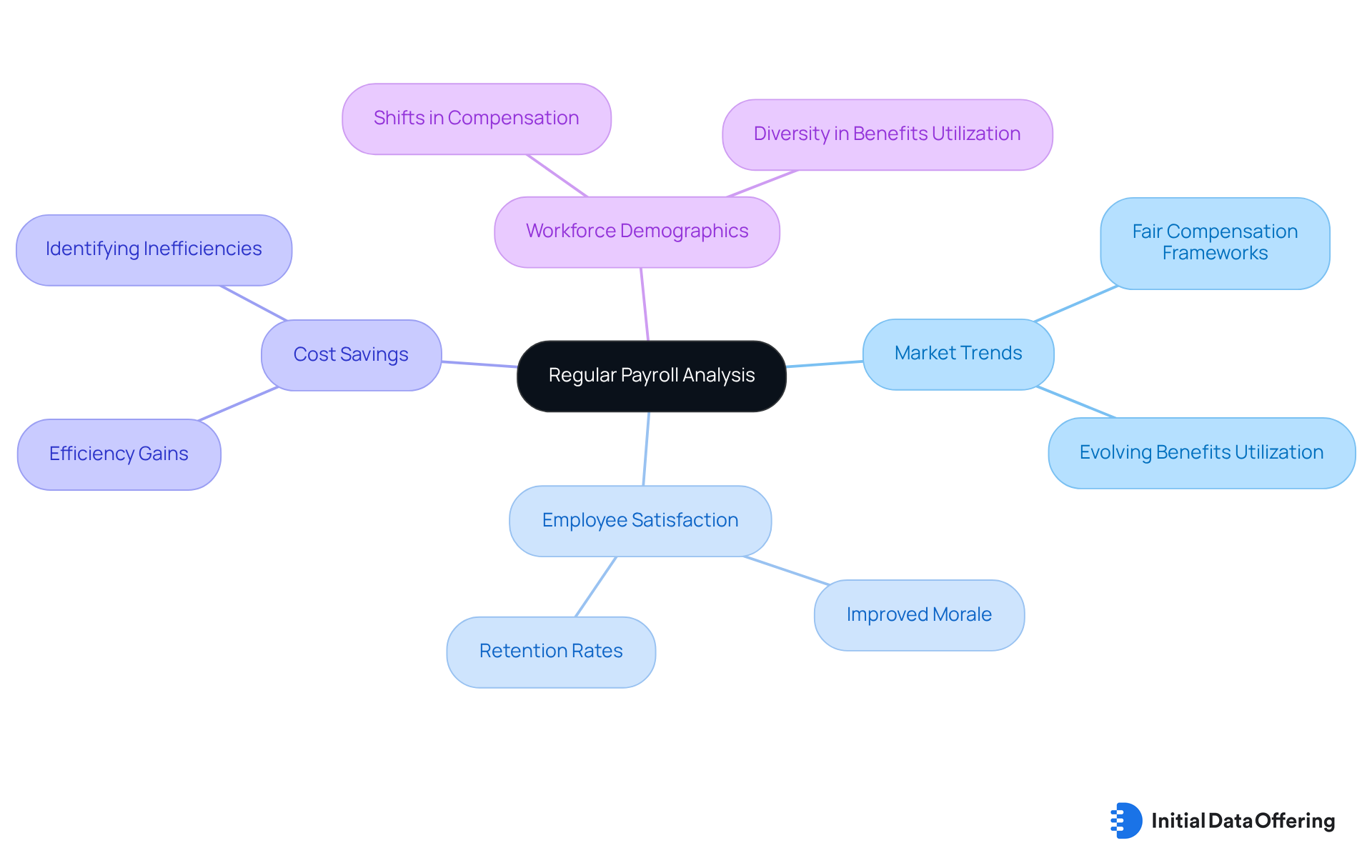
Actionable Insights: Drive Strategic Decisions with Payroll Data Analytics
The primary objective of compensation analytics is to produce actionable insights that influence strategic decisions. By examining compensation information, organizations can reveal patterns associated with employee performance, the effectiveness of remuneration, and retention rates. These insights inform decisions regarding hiring, promotions, and compensation adjustments. For instance, if data indicates a high turnover rate in a specific department, management can investigate further and implement targeted retention strategies. Focusing on actionable insights enables businesses to enhance their overall performance and employee engagement.
What if your organization could leverage these insights to refine its workforce strategy? By understanding the dynamics of compensation and its impact on employee behavior, companies can make informed decisions that drive success. Ultimately, the effective use of compensation analytics not only aids in retaining talent but also fosters a more engaged and productive workforce.

Common Tools: Enhance Payroll Analytics with Industry-Standard Solutions
Utilizing standard instruments for compensation analytics offers significant advantages in enhancing analytical efficiency. Tools like Excel, Tableau, and specialized compensation software provide robust functionalities for data manipulation and visualization. These features allow analysts to generate detailed reports, dashboards, and visualizations, making complex data more accessible. By adopting these established solutions, organizations can ensure that their compensation analysis processes are not only efficient but also reliable and aligned with industry best practices.
How might these tools transform your organization’s approach to compensation analysis?

Benefits of Payroll Analytics: Unlock Value for Market Research Analysts
Payroll analysis offers significant advantages for market research analysts. By examining payroll data related to employee compensation, analysts can uncover insights into workforce trends, salary benchmarks, and employee satisfaction levels. This information is invaluable for market research, as it fosters a deeper understanding of the labor market and its dynamics. Moreover, analyzing payroll data enables companies to identify areas for improvement in their HR practices, ultimately leading to enhanced employee engagement and retention. By harnessing the value of compensation information, analysts can play a crucial role in achieving their organizations' strategic objectives.
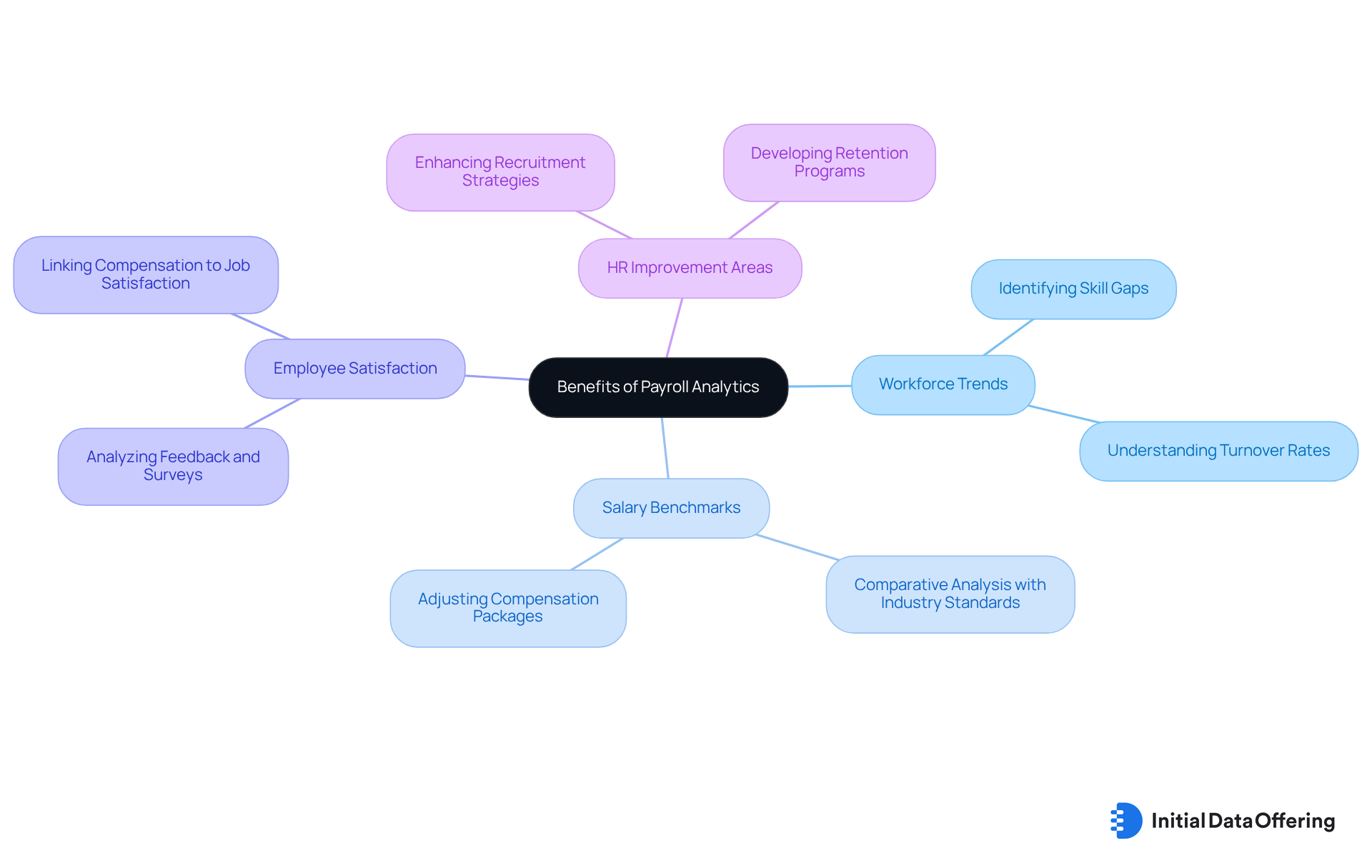
Latest Payroll Tips: Enhance Skills and Knowledge for Effective Analytics
To enhance abilities in compensation analysis, professionals must stay informed about the latest trends and technologies in information evaluation. Engaging in workshops, webinars, and online courses offers valuable insights into new tools and methodologies. These learning opportunities not only provide knowledge but also foster practical skills that can be directly applied in the field.
Furthermore, networking with other professionals encourages knowledge sharing and collaboration, which can significantly enrich one's understanding. By consistently improving their abilities and grasp of current practices, analysts can ensure they are well-prepared to tackle the challenges of compensation information analysis effectively.
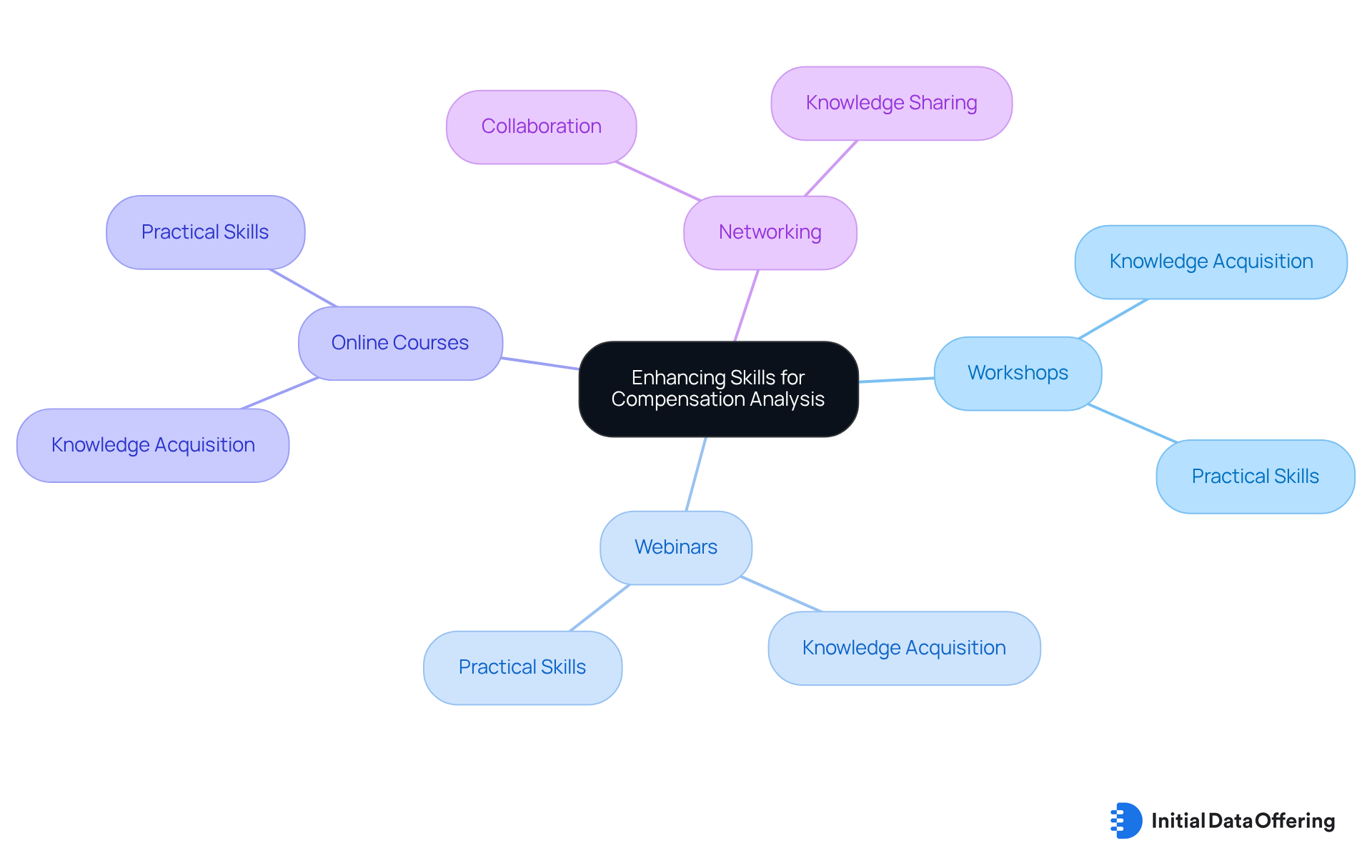
Real-World Examples: Learn from Successful Payroll Data Analytics Applications
The practical uses of compensation data analysis reveal critical insights for companies aiming to enhance employee retention. For example, a prominent retail firm leveraged compensation data to identify turnover trends, which led to the implementation of targeted retention strategies that successfully reduced turnover by 15%. Similarly, another organization refined its compensation framework based on financial insights, resulting in improved employee satisfaction and performance. Notably, staff compensation can account for up to 50% of total overheads in a large global enterprise, underscoring the financial significance of compensation analytics in decision-making.
Furthermore, the accessibility of real-time information empowers companies to make timely decisions regarding labor expenses, thereby enhancing their strategic planning. These examples highlight the importance of utilizing compensation data to identify patterns and inform strategic choices. By examining these successful applications, companies can adopt best practices and innovative approaches to enhance their own compensation analytics strategies, ultimately fostering a more engaged and stable workforce.
An integrated global payroll system is essential for effective payroll data analysis, guaranteeing consistency and accuracy across various regions.
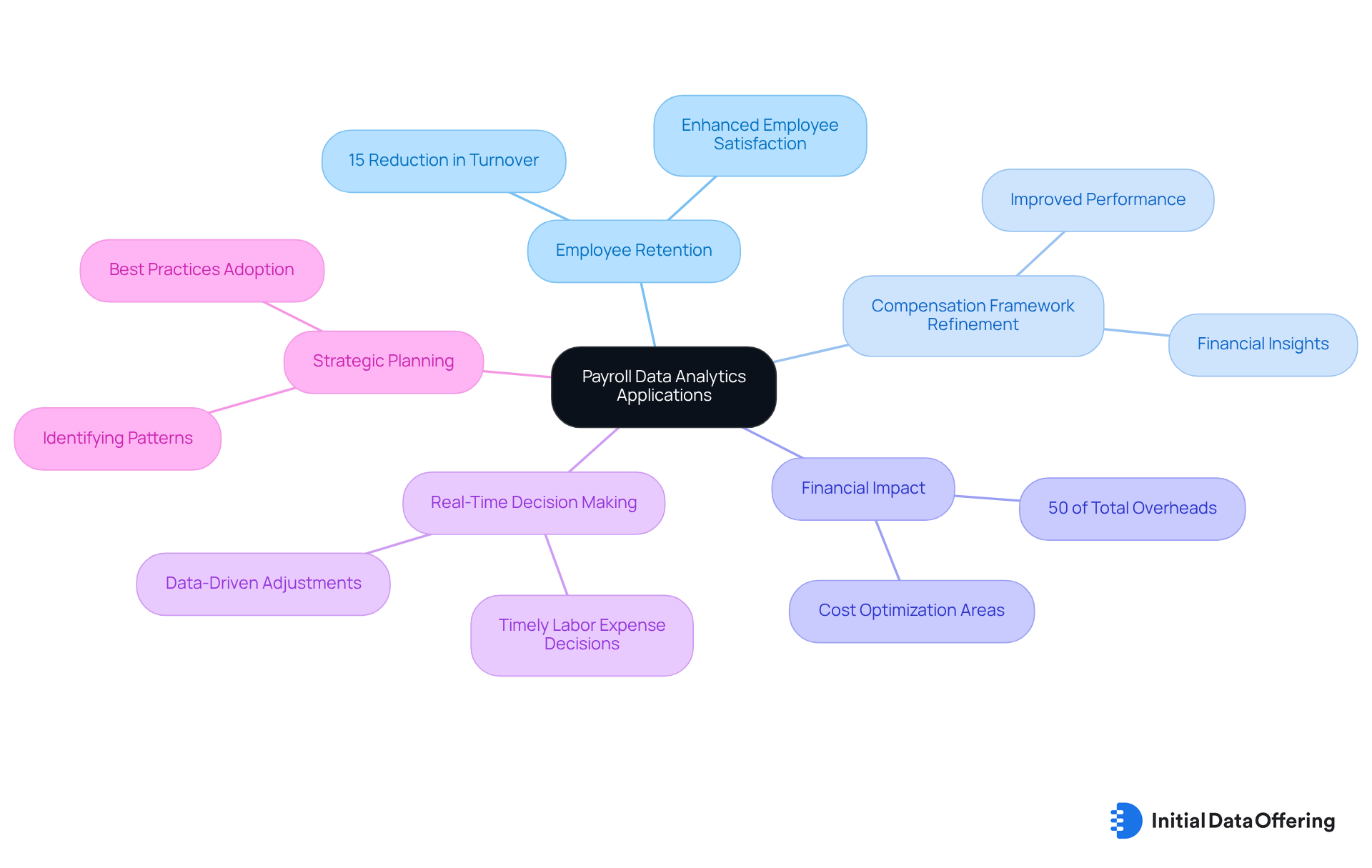
Conclusion
Incorporating effective payroll data analytics is essential for organizations striving to enhance their workforce management and strategic decision-making. By leveraging diverse datasets and advanced analytics tools, businesses can gain valuable insights that inform their compensation strategies and operational efficiency. The integration of automated systems and regular payroll analysis not only streamlines processes but also fosters a culture of accuracy and accountability within organizations.
Throughout the article, key strategies have been highlighted. These include:
- The importance of the Initial Data Offering for accessing comprehensive datasets
- The role of tools like Patriot Software in automating payroll processes
- The necessity of ensuring data accuracy through robust validation methods
Furthermore, the application of advanced analytics tools, such as predictive modeling, empowers organizations to interpret complex data and stay ahead of market trends. This ultimately leads to informed decision-making.
As the landscape of payroll analytics continues to evolve, embracing these strategies will be crucial for organizations aiming to unlock the full potential of their compensation data. By prioritizing actionable insights and employing industry-standard tools, companies can enhance their analytical capabilities, drive employee satisfaction, and maintain a competitive edge in their respective markets. Investing in payroll data analytics is not just a trend; it is a strategic imperative that can significantly impact an organization's success and sustainability.
Frequently Asked Questions
What is the Initial Data Offering (IDO)?
The Initial Data Offering (IDO) is a centralized hub that provides access to a diverse range of compensation datasets, including employee demographics, remuneration structures, and salary trends, helping analysts understand workforce dynamics for better business strategies.
How can organizations benefit from the insights provided by the IDO?
Organizations can leverage insights from the IDO to make informed decisions and improve workforce management by using the data to navigate complexities in managing their workforce effectively.
What tools does Patriot Software offer for payroll analytics?
Patriot Software offers a suite of tools designed to enhance payment analysis through automation, facilitating effective data gathering and assessment while integrating payroll data with broader business metrics.
How does the integration of payroll data with business metrics benefit companies?
This integration provides companies with a comprehensive view of their financial health, enabling analysts to extract valuable insights that inform strategic decision-making.
What advantages do automated compensation systems provide?
Automated compensation systems reduce errors and administrative costs, improve the accuracy and speed of payroll data analytics, and enhance operational efficiency, allowing organizations to focus on strategic initiatives.
What security features are included in these automated systems?
The systems include sophisticated security features such as multi-factor authentication and role-based access controls to safeguard sensitive payroll data.
Why is data accuracy important in payroll analytics?
Data accuracy is crucial because incorrect financial information can lead to misguided insights and poor decision-making, negatively impacting operational efficiency and employee retention.
What strategies can organizations adopt to ensure payroll data accuracy?
Organizations should conduct regular audits, cross-reference payroll data with trustworthy sources, and prioritize clear communication regarding compensation procedures to enhance information integrity.
What are the consequences of neglecting data validation in payroll systems?
Neglecting data validation may result in higher employee turnover rates and productivity losses due to repeated compensation errors, undermining trust in the insights derived from payroll data analysis.